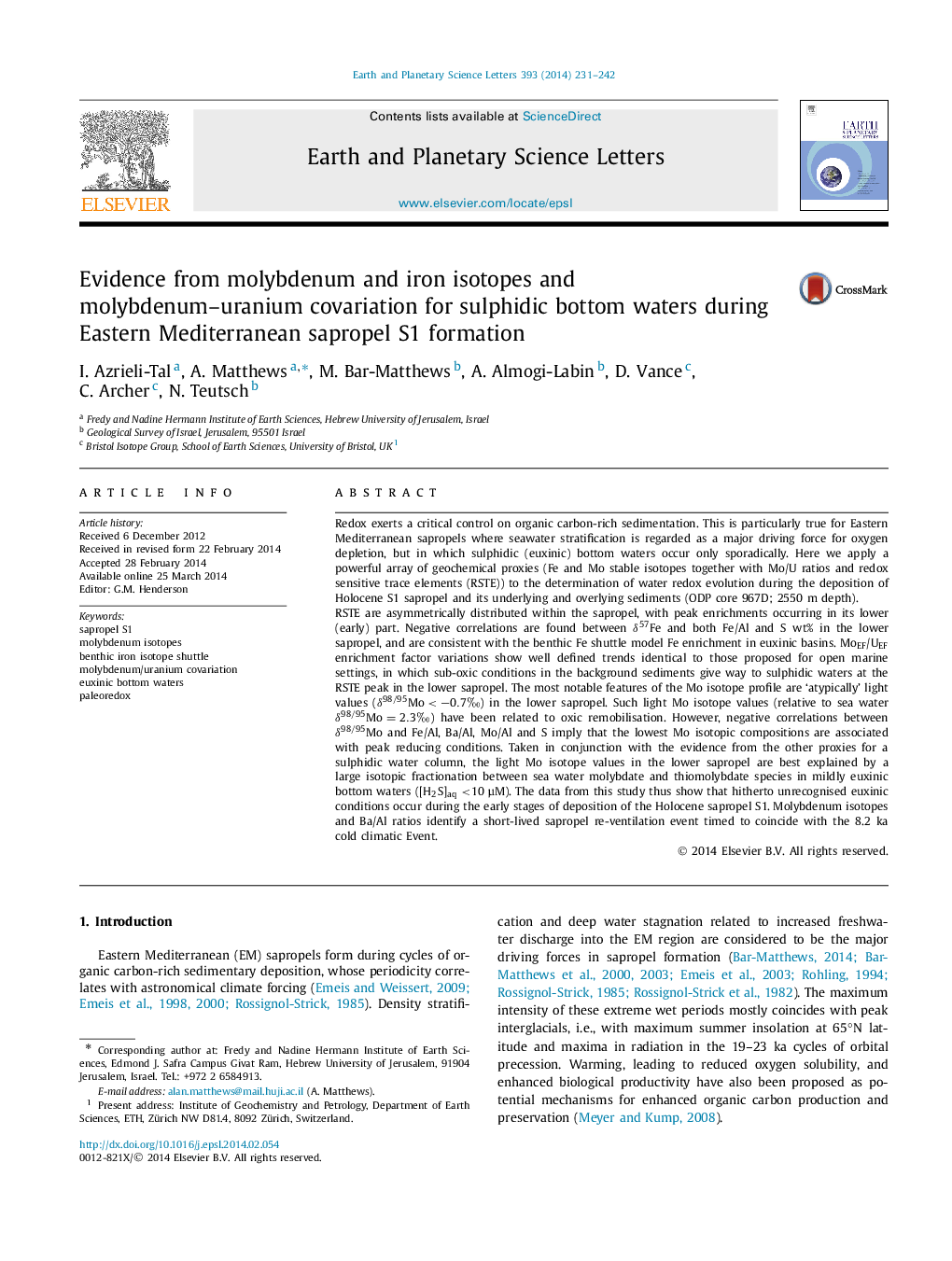| کد مقاله | کد نشریه | سال انتشار | مقاله انگلیسی | نسخه تمام متن |
|---|---|---|---|---|
| 6429348 | 1634763 | 2014 | 12 صفحه PDF | دانلود رایگان |

- Geochemical depth profiles early peak reducing conditions in sapropel S1.
- Fe isotope compositions consistent with benthic shelf to basin Fe-shuttle.
- Mo/U ratios indicate sulfidic bottom waters during peak sapropel development.
- Light Mo isotope compositions compatible with mild euxinic conditions.
- Mo isotopes detect Holocene cold Event.
Redox exerts a critical control on organic carbon-rich sedimentation. This is particularly true for Eastern Mediterranean sapropels where seawater stratification is regarded as a major driving force for oxygen depletion, but in which sulphidic (euxinic) bottom waters occur only sporadically. Here we apply a powerful array of geochemical proxies (Fe and Mo stable isotopes together with Mo/U ratios and redox sensitive trace elements (RSTE)) to the determination of water redox evolution during the deposition of Holocene S1 sapropel and its underlying and overlying sediments (ODP core 967D; 2550 m depth).RSTE are asymmetrically distributed within the sapropel, with peak enrichments occurring in its lower (early) part. Negative correlations are found between δFe57 and both Fe/Al and S wt% in the lower sapropel, and are consistent with the benthic Fe shuttle model Fe enrichment in euxinic basins. MoEF/UEF enrichment factor variations show well defined trends identical to those proposed for open marine settings, in which sub-oxic conditions in the background sediments give way to sulphidic waters at the RSTE peak in the lower sapropel. The most notable features of the Mo isotope profile are 'atypically' light values (δMo98/95<â0.7â°) in the lower sapropel. Such light Mo isotope values (relative to sea water δMo98/95=2.3â°) have been related to oxic remobilisation. However, negative correlations between δMo98/95 and Fe/Al, Ba/Al, Mo/Al and S imply that the lowest Mo isotopic compositions are associated with peak reducing conditions. Taken in conjunction with the evidence from the other proxies for a sulphidic water column, the light Mo isotope values in the lower sapropel are best explained by a large isotopic fractionation between sea water molybdate and thiomolybdate species in mildly euxinic bottom waters ([H2S]aq <10 μM). The data from this study thus show that hitherto unrecognised euxinic conditions occur during the early stages of deposition of the Holocene sapropel S1. Molybdenum isotopes and Ba/Al ratios identify a short-lived sapropel re-ventilation event timed to coincide with the 8.2 ka cold climatic Event.
Journal: Earth and Planetary Science Letters - Volume 393, 1 May 2014, Pages 231-242